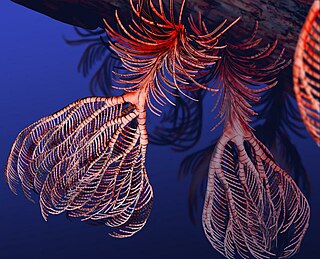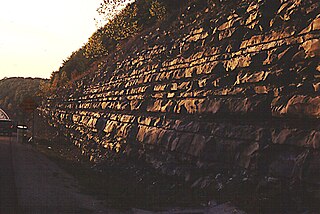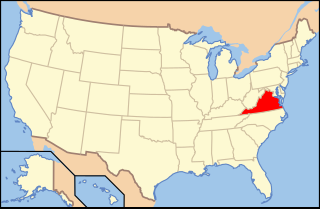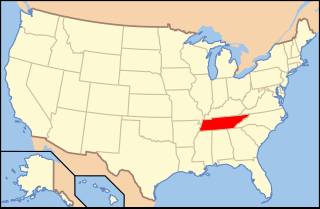
Crinoids are marine invertebrates that make up the class Crinoidea. Crinoids that are attached to the sea bottom by a stalk in their juvenile form are commonly called sea lilies, while the unstalked forms, called feather stars or comatulids, are members of the largest crinoid order, Comatulida. Crinoids are echinoderms in the phylum Echinodermata, which also includes the starfish, brittle stars, sea urchins and sea cucumbers. They live in both shallow water and in depths as great as 9,000 meters (30,000 ft).

Blastoids are an extinct type of stemmed echinoderm, often referred to as sea buds. They first appear, along with many other echinoderm classes, in the Ordovician period, and reached their greatest diversity in the Mississippian subperiod of the Carboniferous period. However, blastoids may have originated in the Cambrian. Blastoids persisted until their extinction at the end of Permian, about 250 million years ago. Although never as diverse as their contemporary relatives, the crinoids, blastoids are common fossils, especially in many Mississippian-age rocks.
Romer's gap is an example of an apparent gap in the tetrapod fossil record used in the study of evolutionary biology. Such gaps represent periods from which excavators have not yet found relevant fossils. Romer's gap is named after paleontologist Alfred Romer, who first recognised it in 1956. Recent discoveries in Scotland are beginning to close this gap in palaeontological knowledge.
Edwardsville is an unincorporated community in Georgetown Township, Floyd County, Indiana. The Duncan Tunnel is located at Edwardsville.

Pentacrinites is an extinct genus of crinoids that lived from the Hettangian to the Bathonian of Asia, Europe, North America, and New Zealand. Their stems are pentagonal to star-shaped in cross-section and are the most commonly preserved parts. Pentacrinites are commonly found in the Pentacrinites Bed of the Early Jurassic of Lyme Regis, Dorset, England. Pentacrinites can be recognized by the extensions all around the stem, which are long, unbranching, and of increasing length further down, the very small cup and 5 long freely branching arms.

The Mississippian Borden Formation is a mapped bedrock unit in Kentucky, Indiana, Illinois, Ohio, West Virginia, and Tennessee. It has many members, which has led some geologists to consider it a group rather than a formation.

The Brassfield Formation, named by A.F. Foerste in 1906, is a limestone and dolomite formation exposed in Arkansas, Ohio, Kentucky, Indiana, Tennessee and West Virginia in the United States. It is Early Silurian in age and well known for its abundant echinoderms, corals and stromatoporoids. In Ohio, where the unit has escaped dolomitization, the Brassfield is an encrinite biosparite with numerous crinoid species.

Paleontology in Ohio refers to paleontological research occurring within or conducted by people from the U.S. state of Ohio. Ohio is well known for having a great quantity and diversity of fossils preserved in its rocks. The state's fossil record begins early in the Paleozoic era, during the Cambrian period. Ohio was generally covered by seawater from that time on through the rest of the early Paleozoic. Local invertebrates included brachiopods, cephalopods, coral, graptolites, and trilobites. Vertebrates included bony fishes and sharks. The first land plants in the state grew during the Devonian. During the Carboniferous, Ohio became a more terrestrial environment with an increased diversity of plants that formed expansive swampy deltas. Amphibians and reptiles began to inhabit the state at this time, and remained present into the ensuing Permian. A gap in the local rock record spans from this point until the start of the Pleistocene. During the Ice Age, Ohio was home to giant beavers, humans, mammoths, and mastodons. Paleo-Indians collected fossils that were later incorporated into their mounds. Ohio has been the birthplace of many world famous paleontologists, like Charles Schuchert. Many significant fossils curated by museums in Europe and the United States were found in Ohio. Major local fossil discoveries include the 1965 discovery of more than 50,000 Devonian fish fossils in Cuyahoga County. The Ordovician trilobite Isotelus maximus is the Ohio state invertebrate fossil.

Paleontology in Kentucky refers to paleontological research occurring within or conducted by people from the U.S. state of Kentucky.

Paleontology in Indiana refers to paleontological research occurring within or conducted by people from the U.S. state of Indiana. Indiana's fossil record stretches all the way back to the Precambrian, when the state was inhabited by microbes. More complex organisms came to inhabit the state during the early Paleozoic era. At that time the state was covered by a warm shallow sea that would come to be inhabited by creatures like brachiopods, bryozoans, cephalopods, crinoids, and trilobites. During the Silurian period the state was home to significant reef systems. Indiana became a more terrestrial environment during the Carboniferous, as an expansive river system formed richly vegetated deltas where amphibians lived. There is a gap in the local rock record from the Permian through the Mesozoic. Likewise, little is known about the early to middle Cenozoic era. During the Ice Age however, the state was subject to glacial activity, and home to creatures like short-faced bears, camels, mammoths, and mastodons. After humans came to inhabit the state, Native Americans interpreted the fossil proboscidean remains preserved near Devil's Lake as the bones of water monsters. After the advent of formal scientific investigation one paleontological survey determined that the state was home to nearly 150 different kinds of prehistoric plants.

Paleontology in Virginia refers to paleontological research occurring within or conducted by people from the U.S. state of Virginia. The geologic column in Virginia spans from the Cambrian to the Quaternary. During the early part of the Paleozoic, Virginia was covered by a warm shallow sea. This sea would come to be inhabited by creatures like brachiopods, bryozoans, corals, and nautiloids. The state was briefly out of the sea during the Ordovician, but by the Silurian it was once again submerged. During this second period of inundation the state was home to brachiopods, trilobites and entire reef systems. During the mid-to-late Carboniferous the state gradually became a swampy environment.

Paleontology in Tennessee refers to paleontological research occurring within or conducted by people from the U.S. state of Tennessee. During the early part of the Paleozoic era, Tennessee was covered by a warm, shallow sea. This sea was home to brachiopods, bryozoans, cephalopods, corals, and trilobites. Tennessee is one of the best sources of Early Devonian fossils in North America. During the mid-to-late Carboniferous, the state became a swampy environment, home to a rich variety of plants including ferns and scale trees. A gap in the local rock record spans from the Permian through the Jurassic. During the Cretaceous, the western part of the state was submerged by seawater. The local waters were home to more fossil gastropods than are known from anywhere else in the world. Mosasaurs and sea turtles also inhabited these waters. On land the state was home to dinosaurs. Western Tennessee was still under the sea during the early part of the Cenozoic. Terrestrial portions of the state were swampy. Climate cooled until the Ice Age, when the state was home to Camelops, horses, mammoths, mastodons, and giant ground sloths. The local Yuchi people told myths of giant lizard monsters that may have been inspired by fossils either local or encountered elsewhere. In 1920, after local fossils became a subject of formal scientific study, a significant discovery of a variety of Pleistocene creatures was made near Nashville. The Cretaceous bivalve Pterotrigonia thoracica is the Tennessee state fossil.

Bourgueticrinida is an order of crinoids that typically live deep in the ocean. Members of this order are attached to the seabed by a slender stalk and are known as sea lilies. While other groups of crinoids flourished during the Permian, bourgueticrinids along with other extant orders did not appear until the Triassic, following a mass extinction event in which nearly all crinoids died out.

Agaricocrinus is a genus of extinct crinoids, belonging to the family Coelocrinidae.
The Pennington Formation is a geologic formation named for Pennington Gap, Virginia. It can be found in outcrops along Pine Mountain and Cumberland Mountain in Kentucky, Virginia, and Tennessee, where it is the uppermost Mississippian-age formation. The name has also been applied to similar Mississippian strata in the Cumberland Escarpment of eastern Kentucky, though the rocks in that area were later renamed to the Paragon Formation.

Onychocrinus is an extinct genus of crinoids.
The geology of Kentucky formed beginning more than one billion years ago, in the Proterozoic eon of the Precambrian. The oldest igneous and metamorphic crystalline basement rock is part of the Grenville Province, a small continent that collided with the early North American continent. The beginning of the Paleozoic is poorly attested and the oldest rocks in Kentucky, outcropping at the surface, are from the Ordovician. Throughout the Paleozoic, shallow seas covered the area, depositing marine sedimentary rocks such as limestone, dolomite and shale, as well as large numbers of fossils. By the Mississippian and the Pennsylvanian, massive coal swamps formed and generated the two large coal fields and the oil and gas which have played an important role in the state's economy. With interludes of terrestrial conditions, shallow marine conditions persisted throughout the Mesozoic and well into the Cenozoic. Unlike neighboring states, Kentucky was not significantly impacted by the Pleistocene glaciations. The state has extensive natural resources, including coal, oil and gas, sand, clay, fluorspar, limestone, dolomite and gravel. Kentucky is unique as the first state to be fully geologically mapped.
Paleontology or palaeontology is the study of prehistoric life forms on Earth through the examination of plant and animal fossils. This includes the study of body fossils, tracks (ichnites), burrows, cast-off parts, fossilised feces (coprolites), palynomorphs and chemical residues. Because humans have encountered fossils for millennia, paleontology has a long history both before and after becoming formalized as a science. This article records significant discoveries and events related to paleontology that occurred or were published in the year 2018.

Flexibilia is a superorder of specialized Paleozoic crinoids. They exhibited a conserved body plan and consistent suite of characteristics throughout their long history. Previously considered a subclass with unclear affinities, later investigation determined that flexibles are well-nested within Cladida, a broad group ancestral to living articulate crinoids. The Ordovician cladid Cupulocrinus acts as an intermediate form linking the generalized anatomy of other early cladids with the distinctive anatomy of flexibles, and several studies have considered it to be ancestral to the rest of the group. Although flexibles never reached the same abundance or diversity as many other crinoid groups, they remained a reliable component of crinoid faunas, particularly from the Silurian onwards. Flexible fossils are very rare in the Ordovician, but the Late Ordovician appears to have been an interval of rapid diversification for the group.















